The Invasive Species Council welcomes the development of a Tasmanian Wild Fallow Deer Management Plan and has made an important contribution to the process through this submission to the draft plan.
Feral deer have been increasing in population and spread at alarming rates in Tasmania, with numbers likely approaching 100,000 towards the end of 2021 and covering 27 per cent of the state.
The estimated annual population growth rate is 11.5 per cent, despite hunting. If nothing is done to stem this growth it is likely Tasmania will have 1 million feral deer occupying up to 56 per cent of the state by 2050. This will have dire consequences for the environment, economy and community.
The feral deer situation in Tasmania has evolved while the Tasmanian Government’s focus has been on a Quality Deer Management policy, which is in essence about maintaining a quality herd of feral deer for hunting and trophies. This hunter focused policy is now proven to be far from adequate in dealing with the growing feral deer problem in Tasmania and has hindered the effective control of feral deer as the population has grown and spread.
Feral deer have evolved from being a resource for the enjoyment of hunters to now being a serious environmental and agricultural pest, and they are becoming a threat to community safety and amenity.
There is now an urgent need for Tasmania to take a new, biosecurity-based approach to managing feral deer.
The Invasive Species Council is so concerned about the feral deer situation in Tasmania that we released a comprehensive feral deer strategy in August 2021. This followed extensive consultation with a range of people and organisations concerned about the impact of feral deer and includes full referencing to source data and information.
We believe this outlined a constructive and realistic path to tackling the problem of feral deer in Tasmania that takes into account recreational hunting. We encourage Game Services Tasmania to consider carefully the approach in that strategy for incorporation into the final Tasmanian deer management plan.
The strategy can be downloaded from our website.









